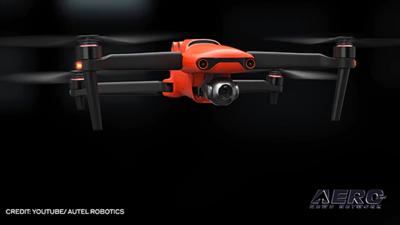Tue, Jan 04, 2022
Best Practices for Wildlife Photography: Adequate Distance and space
The yearly tradition of unmanned aviators has been quiet this year, in a hobby that often sees swathes of excited new drone owners exploring the legal limits of their fresh new toys. It seems that the industry has come a long way towards educating buyers on best practices, however, with fewer incidents involving drones that make nationwide headlines.

One wildlife research specialist stepped in this year, however, stressing not just regulations, but best practices. For users regarding wildlife following a wildlife group's use of unmanned recording equipment a little too close to the critters they protect.
The Cornwall Seal Group Research Trust issued a reminder to fellow wildlife enthusiasts after its founder Sue Sayer witnessed a group of resting seals sprint underwater, frightened by the rapid appearance of a drone. While understanding of the interest felt towards critters, she reminds operators that many animals boast superior senses to humans and often experience serious stress response from what seems reminiscent to a fast moving, shrieking aerial predator. She stresses a simple rule for non-interventionist appreciation of creatures: 100 meters distance, and from humans, 50 for simplicity's sake. UK law differs from some other countries, requiring drones to stay at least 150m away from residential, recreational, commercial, and industrial areas.

While those rules may seem too restricting to operators of other nationalities, local residents note that there are "plenty of approved fields and zones ideal for drone flight".
Some note that the applicable UK drone code doesn't contain hard rules, instead stating "do not fly where you'll disturb or endanger animals and wildlife", which will probably cause headaches among those who disagree as to what the threshold of 'disturb' is. For those acclimating to operation in the United Kingdom, an operator legislation and short flyer ID test are necessary to start, but that introduction saves much pain later on by preventing the pilot from running afoul of the law.
More News
Airport Marking Aids Markings used on runway and taxiway surfaces to identify a specific runway, a runway threshold, a centerline, a hold line, etc. A runway should be marked in ac>[...]
"It is extremely difficult, if not impossible, for manned aircraft to see a drone while conducting crop-enhancing and other aerial applications at low altitudes and high speeds. We>[...]
Aero Linx: The Skyhawk Association The Skyhawk Association is a non-profit organization founded by former Skyhawk Pilots which is open to anyone with an affinity for the A-4 Skyhaw>[...]
“The T-54A benefits from an active Beechcraft King Air assembly line in Wichita, Kansas, where all required METS avionics and interior modifications are installed on the line>[...]
Aero Linx: Aerostar Owners Association The Association offers the Aerostar Owner a unique opportunity to tap an invaluable source of information concerning the care and feeding of >[...]
 ANN's Daily Aero-Term (04.28.24): Airport Marking Aids
ANN's Daily Aero-Term (04.28.24): Airport Marking Aids Aero-News: Quote of the Day (04.28.24)
Aero-News: Quote of the Day (04.28.24) ANN's Daily Aero-Linx (04.28.24)
ANN's Daily Aero-Linx (04.28.24) Aero-News: Quote of the Day (04.29.24)
Aero-News: Quote of the Day (04.29.24) ANN's Daily Aero-Linx (04.29.24)
ANN's Daily Aero-Linx (04.29.24)




